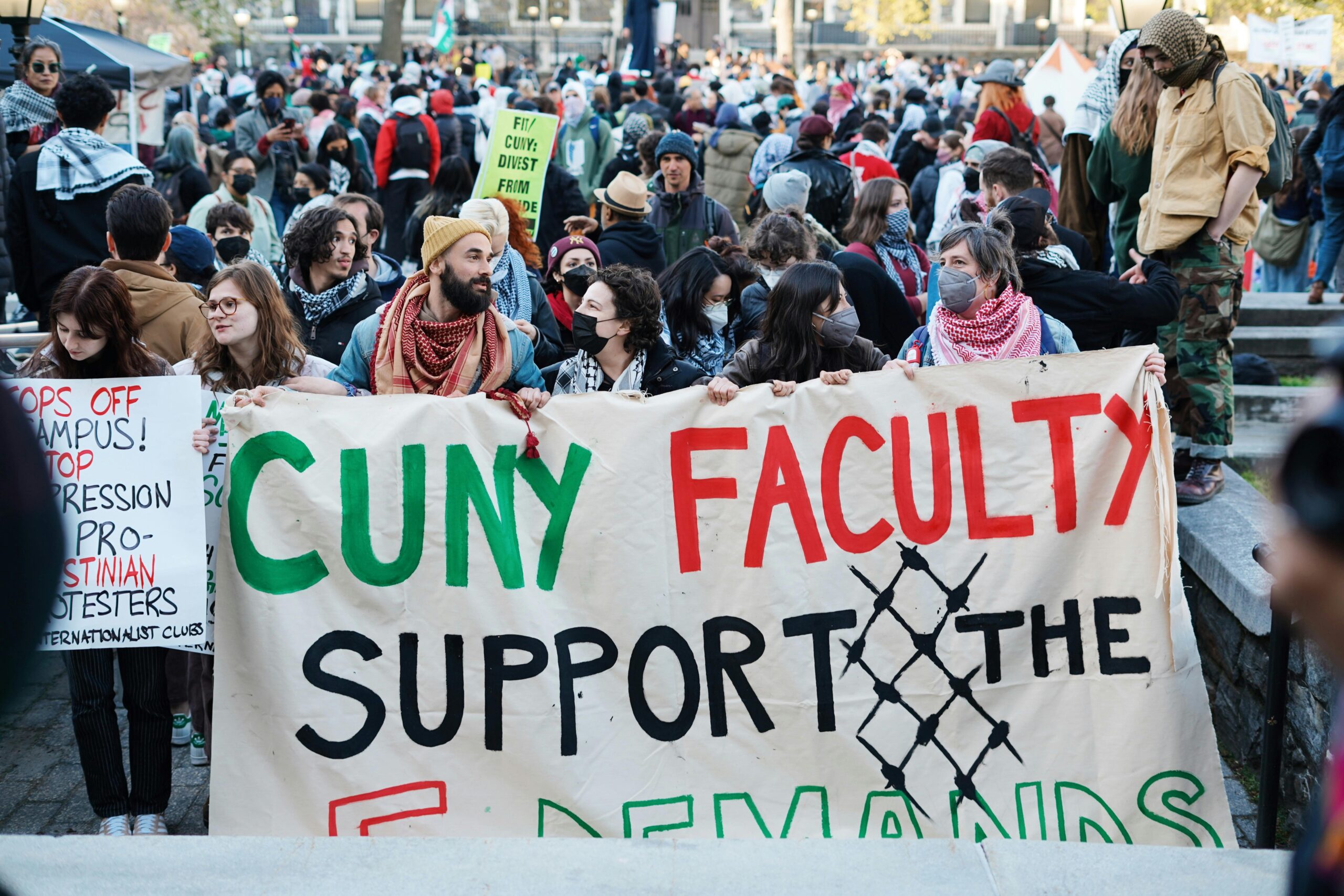Continuing to pursue “total victory” right now is a dangerous mix of politics and strategy. Victory requires the right combination of spirit, strategy and appropriate preparation.
The Iron Swords War is stuck. Despite impressive tactical performances by the Israel Defense Forces, Israel is trapped between war goals that are far from being realized in the Gaza Strip and attrition from which there is no way out in the north. On the political level, as the IDF deepens its destruction of the dusty Gaza cities and the U.S. presidential election approaches, our isolation is tightening, increasingly threatening Israel’s economic future and place in the family of nations. It is true that Israel is persecuted by international institutions that are inherently hostile to it and that a progressive political trend with blatantly antisemitic characteristics is on the ascendant. None of that changes the serious consequences of the continuation of the fighting on the international and economic levels.
Israeli strategic discourse is also stuck between supporters of “absolute victory” and those pursuing a hostage deal. It is no coincidence that these camps overlap the public fault lines of Oct. 6. Nor is our leadership able to separate the political discourse from the strategic discourse.
Sometimes, the best way to get out of a conceptual and practical impasse is to take on a new perspective. The Six-Day War established a misleading standard according to which wars last a few days and are built in one piece. The reality is different. Wars are historical phenomena that usually last quite a bit longer. They are also much more diverse.
In the Second World War, for example, there were at least three sub-wars in the European context alone. They were the struggle for control of Europe and its resources; the German campaign in Africa, which was designed to cut Britain off from India; and the war in the Atlantic, which was designed to isolate Britain from America.
The strategic history of Zionism is also made up of several long wars. The first was the struggle between the rival national movements in Palestine-Israel. Zionism won that struggle in the War of Independence. That conflict was also a historical transition from a war between national movements to Israeli-Arab wars. Ben-Gurion understood this on the eve of the war. In a brilliant preparation process, he completely changed the concept, organization and means of the Hebrew Defense Force. Thanks to these preparations, the IDF was able to switch from defense to attack in April-May 1948 when it implemented Plan D and a series of offensive operations, the first of which was “Operation Nachshon.” An accurate understanding of the nature of the expected war and the appropriate organization of the IDF in preparation for it led to the defeat of a coalition of Arab countries.
Over the following four decades, Israel successfully faced the threat of Arab armies combined with terrorism. Although the Arabs changed their strategy from time to time (for example, during the War of Attrition in the Suez Canal), the State of Israel managed to repeatedly defeat the military element that threatened it. The Israeli-Arab war actually ended with the Israeli-Egyptian peace agreement and the Syrian refusal to escalate the First Lebanon War in 1982 into a wider Israeli-Syrian war.
The ‘Systemic Blow’
Phase of the Iran-Israel War
Since the days of the security strip in Lebanon and even more so since Israel’s withdrawal from it, the Jewish state has been fighting a third war: an Iranian-Israeli war, via Tehran’s proxies. This war has a religious background and a regional nature. Like all wars, this one has its own military character, different from that of the previous Israel-Arab wars.
Unfortunately, Israel has conducted this war over the past 25 years with the wrong strategy. That strategy is based on the assumption that Israel is the strong side—that it is a regional power capable of deterring Iran’s emissaries through its advantages in firepower and intelligence quality without removing the military threat. On the military level, we mistakenly assumed that our military power—especially our air power— was adequate, and that the addition of the defense leg and other minor adjustments were not required. Regrettably, there are those even today who believe Israel’s ability to destroy the state of Lebanon is an effective military answer to the threat posed by Hezbollah.
The current war in Gaza must be understood as one campaign within this larger war. And it is not just any campaign. The current campaign in the Gaza Strip is the stage of Israeli recovery and awakening.
At the political level, the Oct. 7 attack was the moment of awakening and recognition of the failure of Israel’s current strategy. This is a parallel moment to the awakening of Europe on Sept. 1, 1939 to the fact that the policy of appeasing Hitler had failed. But a political awakening is not enough. From May 1940, it took Churchill four years to build the necessary military capability and confidence and harness American assistance to take on the Nazis. All the while, Britain suffered painful defeats before the conditions were met for an attack in Europe in June 1944.
On the military level, the IDF attack in Gaza dismantled the organized military power of Hamas and took a huge toll on all Gazans, terrorists and non-terrorists alike. It does not appear that the continuation of the attack offers the potential for further significant achievements. The current operations in Gaza should be perceived not as a standalone war but as a campaign within a longer war. This is a critical campaign designed to enable a historic transition from a strategy of containment and deterrence to a strategy of threat removal and breaking the Iranian stranglehold. In military theory, a campaign that enables transition from defense to offense is called a “systemic blow.”
Churchill could not go on the attack in Europe in May 1940 but had to spend time and effort building the conditions for it, and the same applies to us. An army that built itself according to the concept of “deterrence rounds” and did not imagine a decisive war in Gaza cannot be made ready for such a war overnight. What conditions do we need to create to enable us to realize the achievements of the war in Gaza and prepare ourselves for an attack?
On the military level, it is necessary to build the IDF in a way that will enable the relatively quick and effective removal of the military threat in Gaza and Lebanon. The IDF must be built to realize this goal without being dragged into a long campaign of attrition that harms us and serves our enemies. What are the military barriers preventing us from conducting this form of warfare?
In the Gaza Strip, the barrier is mainly the IDF’s limited ability to locate and destroy the underground infrastructure on a sufficient scale and at a sufficient pace. The success of Hamas in dragging us into a long campaign of attrition is due to the disconnect between our tactical success above ground and Hamas’s ability to sustain its organization underground.
In Lebanon, the barrier has to do primarily with Hezbollah’s firepower and precision attack capability. Every military planner understands that in the face of the power of the enemy’s anti-tank missiles in the north, a power that has only increased and been perfected during the months of the current war, and in the face of the ability the enemy has developed to penetrate our air defense systems, the State of Israel currently does not have a decisive short-war option.
Beyond these two points, there are, of course, the vital matters of replenishing supplies, refreshing and re-training forces, renewing intelligence, better preparing the civilian home front and national infrastructure, and other preparations.
At the national level and within the IDF as well, Israel must unite and renew its internal forces. A leadership that will renew trust must be chosen and appointed.
If we understand the current campaign in Gaza as a blow designed to enable a transition from containment and defense to attack and decisiveness, it will be possible to see its historical achievements:
The Oct. 7 attack exposed the wider Iranian plot to the world. Iran’s attack on the Jewish state on April 14 made Iran’s intentions even clearer.
The war united the new regional coalition against the Iranian threat, under U.S. leadership. Regional normalization born out of the Gaza campaign is a critical achievement if the campaign is to be decisive.
Iron Swords has set Hamas’s capabilities back years and created the conditions for the return of our abductees, thanks to our control of the Strip and right of veto over its rehabilitation. It will also allow military freedom of action in Gaza for the future, preventing the reemergence of the level of threat Israel faced on Oct. 6.
The conditions created by the Gaza campaign must be realized, not eroded. Now it is necessary to return the abductees, return the displaced to their homes, and use the time we have bought with blood to prepare for the decisive engagement.
Like Churchill, we too need a few years to rebuild in order to overwhelm the military forces on our border while solidifying the regional coalition and using it to neutralize Iran’s interference. Unless the unexpected happens and we reach the Hamas leadership and release the abductees militarily, it seems that the potential of the Gaza campaign has been exhausted.
Conclusion
National willpower and fighting spirit are of course necessary conditions for victory, but they are not enough. A professional approach to war requires examining the relationship between strategy, leadership and concrete military capabilities. To win the Second World War, Britain needed a change of leadership in the government and among the armed forces, changes in the professional military concept and the building of concrete military capabilities that were more suitable than those developed before the war.
The Iron Swords War has achieved a temporary removal of the Hamas threat, allowing for critical political and military learning and giving the country essential time. Israel’s economy must be restarted to support preparations for the next campaign. Israel would be well advised to avoid doubling the size of the IDF as a traumatic response to Oct. 7. Instead, we should be content with a moderate increase in the size of the forces and focus on the two crucial capabilities described above: The location and destruction of underground infrastructure, and suppression of the enemy’s launch capabilities in the north against both our forces and the home front.
The course of preparation must be led quickly, decisively and without delay. We are nine months into the war and still running out of resources and not preparing for an attack. Far from it.
The next campaign in the Thirty Years’ War with Iran and its proxies should begin with the rapid and effective removal of the Hezbollah threat in the north through the occupation of southern Lebanon, at the same time destroying most of the enemy’s missile capabilities. The removal of the threat from the north will make it possible to divert most of our forces to the recapture of the Gaza Strip, if necessary, the completion of its purification and the implementation of a plan to stabilize it without Hamas. When the time comes, it will also be possible to consider the Syrian regime, which relies on a drug economy and Iranian support.
Striving for “total victory” here and now stops us from taking vital preparatory steps and delays both learning and healing. It depletes our strength; it does not enhance it. Continuing to pursue “total victory” right now is a dangerous mix of politics and strategy. Victory requires the right combination of spirit, strategy and appropriate preparation. The historical role of the Iron Swords War is to create the conditions for the formation of all three.
* Originally published by the Begin-Sadat Center for Strategic Studies.
Brig. Gen. (res.) Eran Ortal recently retired from military service as commander of the Dado Center for Multidisciplinary Military Thinking. He is a well-known military thinker both in Israel and abroad. His works have been published in The Military Review, War on the Rocks, Small Wars Journal at the Hoover Institution, at Stanford and elsewhere. His book The Battle Before the War (MOD 2022, Hebrew) dealt with the IDF’s need to change, innovate and renew a decisive war approach.













